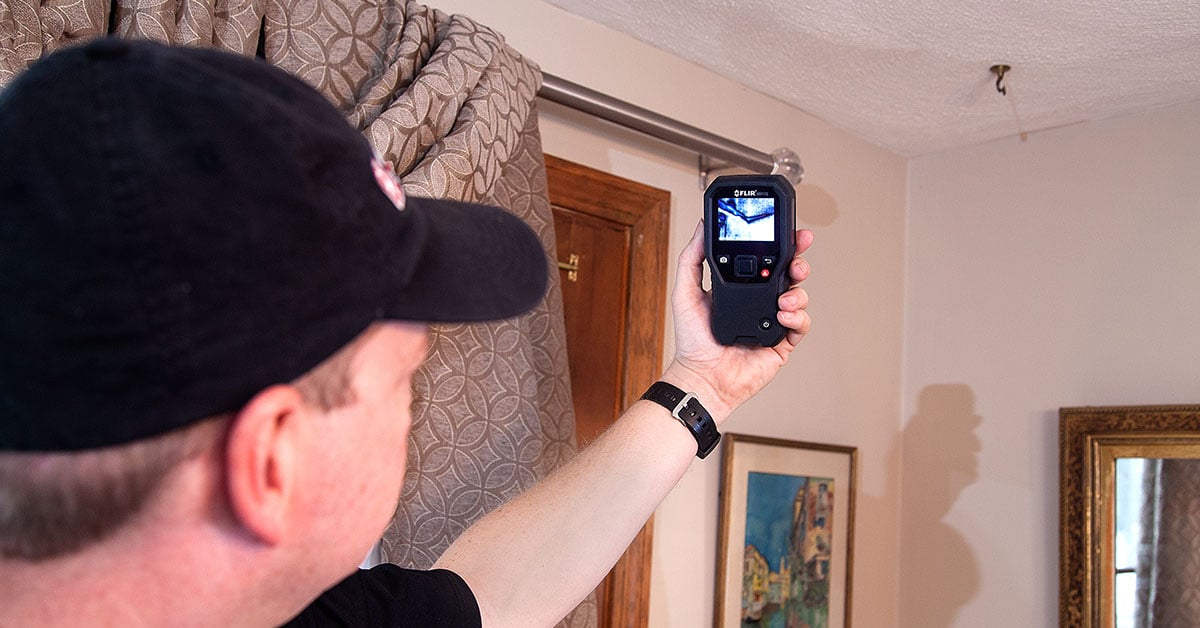Each person seems to have their own way of thinking when it comes to Finding hidden leaks.

Early detection of leaking water lines can reduce a prospective calamity. Besides saving you cash, it will certainly reduce the stress as well as aggravation. The minute you find a leak, calling your plumber for repair services is the very best option. Nonetheless, some tiny water leakages may not show up. Here are some hacks that help if you can not spot it with your nude eyes.
1. Take A Look At the Water Meter
Every home has a water meter. Checking it is a proven way that helps you find leakages. For starters, switch off all the water resources. Ensure no person will purge, use the faucet, shower, run the washing equipment or dishwasher. From there, go to the meter and watch if it will certainly alter. Considering that nobody is using it, there need to be no motions. If it relocates, that shows a fast-moving leakage. If you discover no adjustments, wait a hr or two and inspect back again. This suggests you might have a slow leak that can even be below ground.
2. Inspect Water Intake
If you find unexpected modifications, in spite of your intake being the exact same, it means that you have leaks in your plumbing system. An abrupt spike in your costs suggests a fast-moving leakage.
On the other hand, a consistent rise on a monthly basis, even with the very same behaviors, shows you have a slow-moving leakage that's additionally slowly escalating. Call a plumber to extensively inspect your residential property, particularly if you feel a warm area on your flooring with piping underneath.
3. Do a Food Coloring Test
When it comes to water consumption, 30% comes from toilets. If the color somehow infiltrates your dish during that time without flushing, there's a leakage between the tank and bowl.
4. Asses Exterior Lines
Do not fail to remember to check your outdoor water lines too. Test spigots by attaching a garden hose. Needs to water leak out of the connection, you have a loosened rubber gasket. Change this and make certain all connections are limited. If you have actually obtained a sprinkler system, it will assist get it expertly examined and also preserved annually. One little leakage can waste lots of water as well as increase your water bill.
5. Examine the situation and check
Property owners should make it a practice to examine under the sink counters and also inside cabinets for any bad odor or mold growth. These 2 warnings suggest a leakage so timely focus is required. Doing routine inspections, also bi-annually, can conserve you from a significant issue.
Inspect for stainings and damaging as many appliances and also pipes have a life span. If you suspect dripping water lines in your plumbing system, do not wait for it to escalate.
Early discovery of leaking water lines can minimize a prospective disaster. Some tiny water leaks may not be noticeable. Inspecting it is a proven means that assists you find leakages. One small leakage can squander bunches of water as well as surge your water costs.
If you think dripping water lines in your plumbing system, do not wait for it to rise.
WARNING SIGNS OF WATER LEAKAGE BEHIND THE WALL
PERSISTENT MUSTY ODORS
As water slowly drips from a leaky pipe inside the wall, flooring and sheetrock stay damp and develop an odor similar to wet cardboard. It generates a musty smell that can help you find hidden leaks.
MOLD IN UNUSUAL AREAS
Mold usually grows in wet areas like kitchens, baths and laundry rooms. If you spot the stuff on walls or baseboards in other rooms of the house, it’s a good indicator of undetected water leaks.
STAINS THAT GROW
When mold thrives around a leaky pipe, it sometimes takes hold on the inside surface of the affected wall. A growing stain on otherwise clean sheetrock is often your sign of a hidden plumbing problem.
PEELING OR BUBBLING WALLPAPER / PAINT
This clue is easy to miss in rooms that don’t get much use. When you see wallpaper separating along seams or paint bubbling or flaking off the wall, blame sheetrock that stays wet because of an undetected leak.
BUCKLED CEILINGS AND STAINED FLOORS
If ceilings or floors in bathrooms, kitchens or laundry areas develop structural problems, don’t rule out constant damp inside the walls. Wet sheetrock can affect adjacent framing, flooring and ceilings.
https://www.servicemasterbyzaba.com/blog/how-to-detect-water-leakage-in-walls/

Do you really like reading up on Locating water leaks? Give feedback directly below. We would be delighted to listen to your feelings about this blog entry. We are looking forward to see you back again in the future. Liked our posting? Please share it. Help other people check it out. I take joy in reading our article about Finding hidden leaks.
Comments on “Guide To Water Leakage Discovery In Your Home”